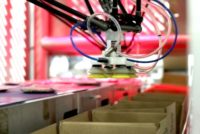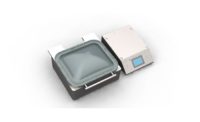According to the Food and Agriculture Organization of the United Nations, global quantitative food losses and waste are roughly 20 percent for meat and 35 percent for fish annually. Package defects, such as leaks, often can be the cause of food that is lost or wasted. While small leaks may not seem to be cause for concern, the reality is that gross or fine leaks that are undetectable to the naked eye can have detrimental effects, leading to product contamination, reduced shelf life, increased waste, costly recalls and damage to a brand’s image. There are, however, leak detection processes — some more accurate than others — that allow manufacturers and meat processors to test for faulty packages, enabling them to mitigate and manage these concerns.
Out with old, in with reliable
Traditionally, bubble testing has been the primary method for detecting package leaks. This is carried out by immersing a package in water and observing bubbles created when the gas inside the package finds its way toward those leaks to escape. But leaks caused by insufficient welding seams are often not large enough to be recognizable and escape undetected with this method.
Another limitation with this method lies in the human factors. Bubble testing relies on the individual tester’s subjective assessment and attention. In addition to not providing an actual leak rate unit of measure, bubbles could, for example, get caught in the fold or overlap and not be seen by the naked eye, increasing the probability that defective products make it to market. This method is also subject to inevitable contamination — especially for meat, poultry and fish products. It is possible that test product can enter and spoil the testing water. Furthermore, the water in the test tank will ultimately become cloudy after some period of time and must be replaced regardless of whether it gets contaminated, tacking on additional costs.
Science vs. educated guess
Today, companies are moving from heuristic testing approaches to science-based options that are more precise, repeatable and technologically sound. Non-destructive, quantitative measurement technologies that utilize a pressure increase in a flexible chamber exist as an alternative. This method relies on two membranes that create a conformal vacuum chamber. The gas flows through any package leaks into the chamber where it causes a pressure increase. The vacuum gauge quickly measures the change to calculate the package’s leak rate.
Modernized technologies address variables that are absent from water bath testing, including repeatability, reproducibility and quantifiability. In addition, these alternatives can provide the added benefit of an enhanced Human Machine Interface (HMI), which allows for easy navigation of the machine and its results, simple data export capabilities, and remote viewing/monitoring which affords operators definitive results and food producers a way to document findings. Choosing the appropriate test method will ultimately result in modern quality management that is quantitative, reliable and less subject to errors that can compromise a brand promise and add to the epidemic of food waste. NP






Report Abusive Comment